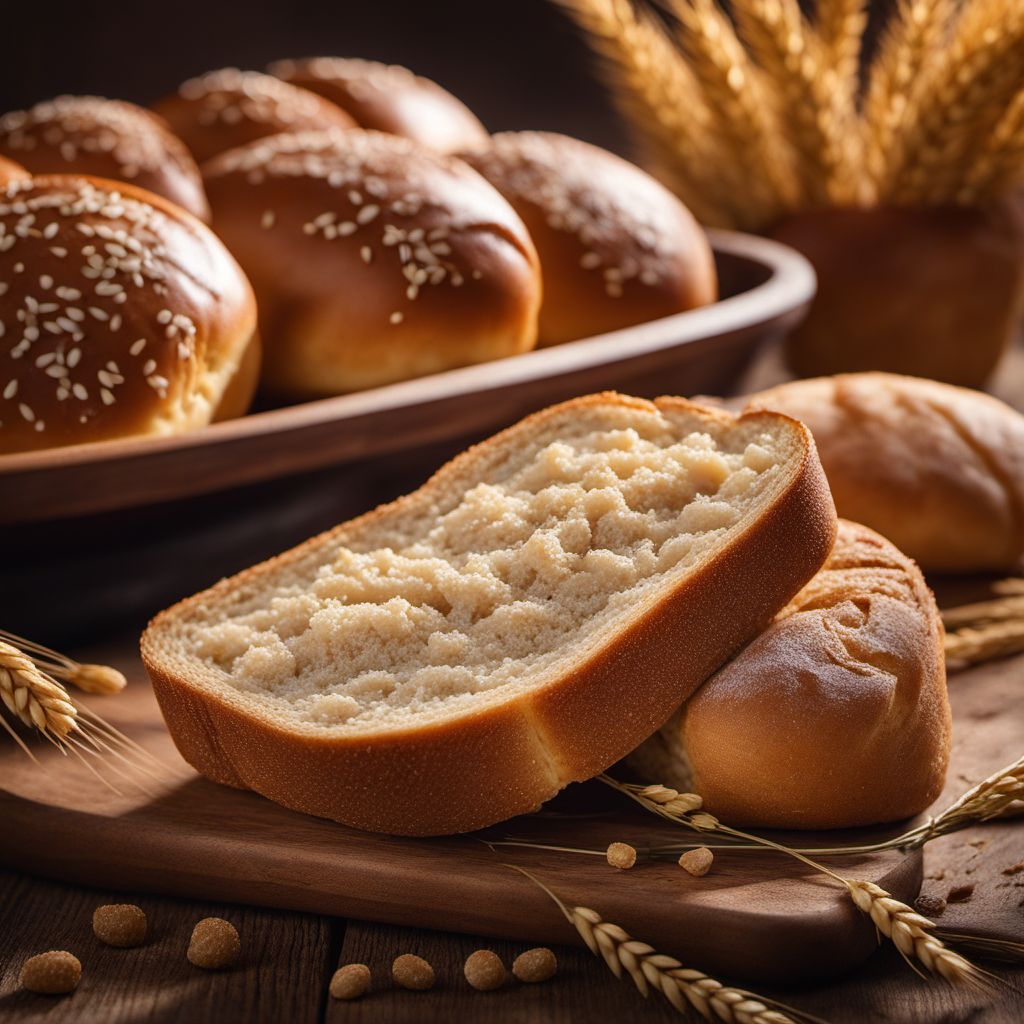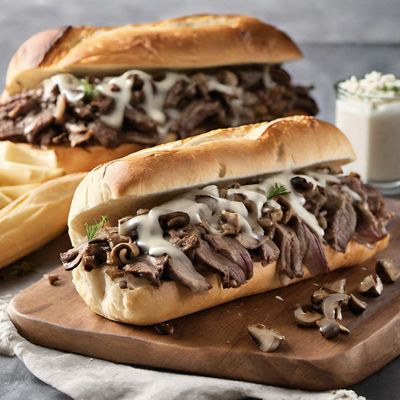
Ingredient
Wheat bread and rolls, semi-brown
The Wholesome Wonder: Unveiling the Goodness of Semi-Brown Wheat Bread
Wheat bread and rolls, semi-brown, are made from a combination of refined wheat flour and whole wheat flour, resulting in a bread with a denser texture and a more pronounced flavor compared to white bread. The semi-brown variety offers a compromise between the lightness of white bread and the robustness of whole wheat bread. It has a slightly nutty taste and a chewy texture, making it a popular choice for sandwiches, toast, and accompaniments to soups and stews.
Origins and history
Wheat has been cultivated for thousands of years, with evidence of its domestication dating back to ancient civilizations in the Middle East. Bread made from wheat has played a significant role in the diets of various cultures throughout history. The development of semi-brown bread is a response to the demand for healthier bread options that retain some of the characteristics of white bread. Today, wheat bread and rolls, semi-brown, are enjoyed worldwide as a nutritious and flavorful choice.
Nutritional information
Wheat bread and rolls, semi-brown, are a good source of dietary fiber, vitamins, and minerals. They provide a steady release of energy and help maintain a feeling of fullness. This bread is lower in calories and higher in fiber compared to white bread, making it a healthier choice. It also contains essential nutrients such as iron, magnesium, and B vitamins.
Allergens
May contain gluten.
How to select
When selecting wheat bread and rolls, semi-brown, look for loaves that are firm and well-shaped, with a golden-brown crust. Avoid bread that feels overly soft or has a pale color, as it may indicate a higher proportion of refined flour. Check the ingredient list to ensure that whole wheat flour is listed as one of the main ingredients. Freshly baked bread from local bakeries or artisanal shops is often a good choice for quality and taste.
Storage recommendations
To keep wheat bread and rolls, semi-brown, fresh, store them in a cool, dry place, such as a bread box or a pantry. Avoid storing them in the refrigerator, as it can accelerate staling. If you don't plan to consume the bread within a few days, it can be sliced and frozen for longer-term storage. To thaw frozen bread, simply leave it at room temperature or toast it directly from frozen.
How to produce
Wheat bread and rolls, semi-brown, are typically produced by professional bakers using specialized equipment and techniques. However, amateur bakers can also try their hand at making this bread at home using a combination of refined wheat flour and whole wheat flour. There are numerous recipes and tutorials available online that provide step-by-step instructions for making semi-brown wheat bread.
Preparation tips
Wheat bread and rolls, semi-brown, can be enjoyed in various ways. It is commonly used for sandwiches, toast, and bruschetta. The heartier texture of this bread makes it suitable for dipping into soups and stews. It can also be used as a base for open-faced sandwiches or as a complement to cheese and charcuterie boards. Additionally, stale semi-brown bread can be transformed into breadcrumbs or croutons for use in recipes.
Substitutions
White bread, whole wheat bread
Culinary uses
Wheat bread and rolls, semi-brown, are commonly used in sandwiches, toast, and as a side with soups and stews. They can also be used to make French toast, bread pudding, and stuffing.
Availability
Worldwide



